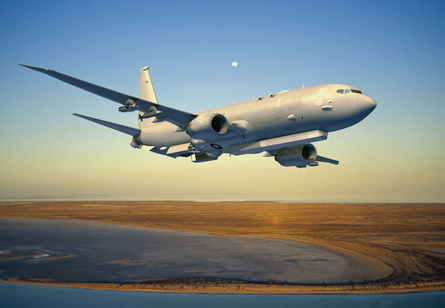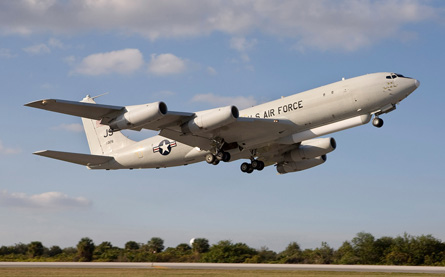Boeing has revealed a new version of the P-8 Poseidon aimed at challenging the primacy of the Northrop Grumman E-8C JSTARS in detecting and striking moving ground targets.
The 737-based P-8 aerial ground surveillance (AGS) concept proposes to add a next-generation radar, such as the Raytheon advanced airborne sensor, plus an on-board arsenal of bombs and missiles.
Unveiled at the Air Force Association's Air Warfare Symposium in Orlando, Florida on 18 February, the concept has provoked a debate between Boeing and Northrop over the likely cost of modernising the US Air Force's current E-8C fleet, and on the wisdom of arming such surveillance platforms.
 |
|---|
© Boeing |
Boeing senior manager for airborne warning systems Jim Eisenhart claims that Boeing could deliver 17 modified P-8s for the same amount that it would cost to modernise the USAF's 17 E-8Cs with new engines and avionics. Northrop has estimated this figure as $5.2 billion, including $4.1 billion to install the Northrop/Raytheon radar technology insertion programme array.
The USAF has already spent $22 billion to develop, upgrade and sustain the E-8C fleet, says Dale Burton, Northrop's vice-president for intelligence, surveillance, reconnaissance and battle management command and control. "Anybody thinking they're hitting parity with this aircraft for less than that I think is on a strange trip," he adds.
Northrop's concept for a modernised E-8C also includes installing Ku- or X-band multifunction radars on both sides of the type's forward fuselage. These would create synthetic aperture radar images at the same time that the JSTARS' canoe-mounted APY-7 sensor scans for moving ground targets.
 |
|---|
© Northrop Grumman |
The E-8C has already been flown with replacement JT8D engines |
Northrop has also questioned the need for an AGS platform to carry weapons, noting that the E-8C has already demonstrated the ability to network directly with weapons carried by other aircraft, such as the Boeing B-52.
The USAF is likely to evaluate both the E-8C upgrade and P-8 AGS proposals as it reviews its options for the ground moving target indication mission. It had planned to replace the E-8C with the Boeing 767-based E-10A, but abandoned that programme in 2005.
A new analysis of alternatives will begin in March, according to chief of staff Gen Norton Schwartz, who expects this to be completed "some time after March 2011".
Source: Flight International
















